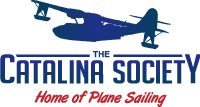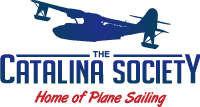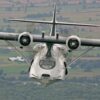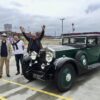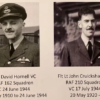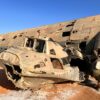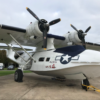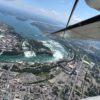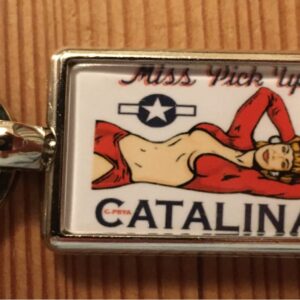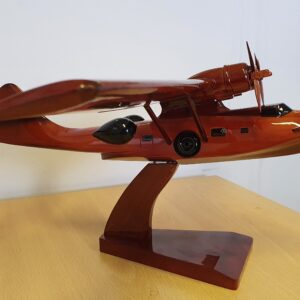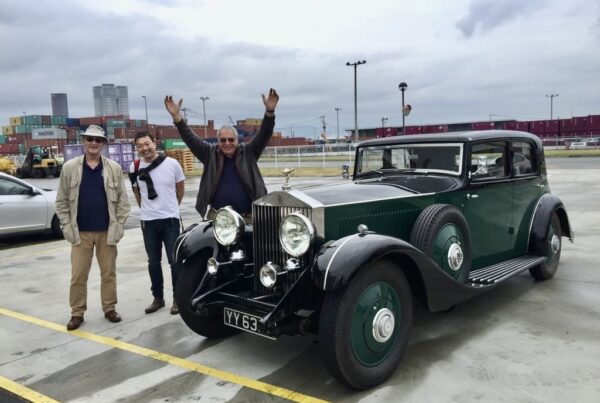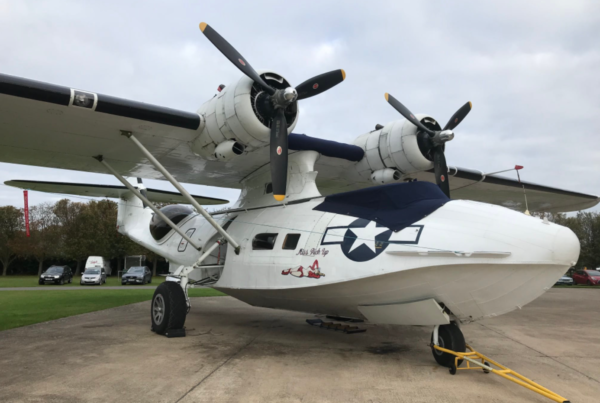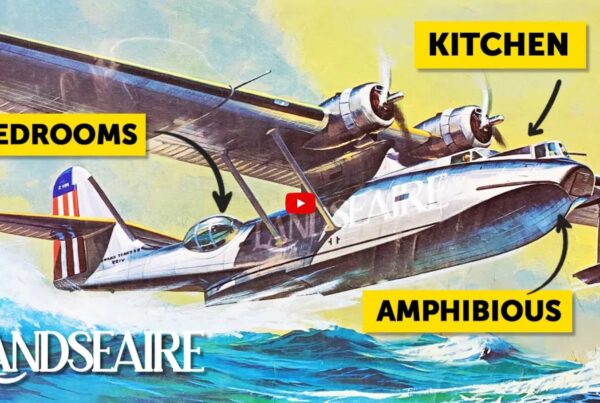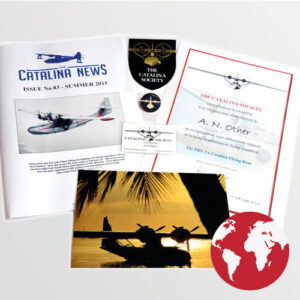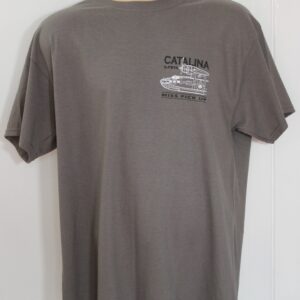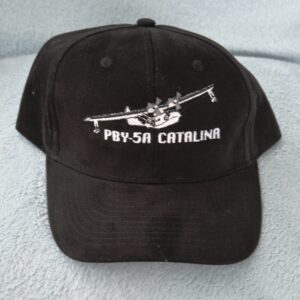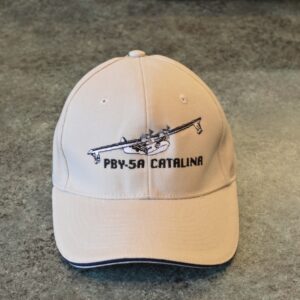By Paul Warren Wilson
Published: 21 April, 2006
 Print
Print

Paul Warren Wilson
“Safety boat from Catalina, downwind to land”
They obviously hear us, they are very excited, they have come out here specially from Quito, but will they be much use if we get into difficulties?
In any case, with a glassy water landing fast approaching, Laguna San Pablo some 8,500 feet above sea level and offering just 9,000 feet of landing run, volcanoes up to 15,000 feet on both sides, a marginal single-engine escape route and a land where some say the gods will not welcome the first ever visit by a flying boat to their lake, nothing less than perfection will do for this approach. And constantly reminding us of the factors involved is our experience of a touch and go on Lake Titicaca a few days earlier, 12,500 feet up in the Bolivian wilderness. That was less than enjoyable, with a massive downdraught at the worst possible moment on the approach causing a heavy touchdown and a new set of false teeth in the back of the plane! At least now we have the morning calm, and every prospect of the air remaining tranquil.
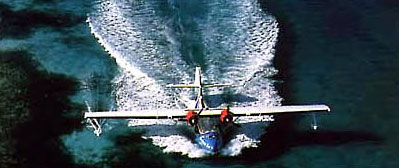
So with stickier palms and higher pulse rate than I would like my doctor to know about, all my skill and experience are focused on the next 2 minutes of flying. Alert to every input, rudely disregarding the irrelevant, gently adjusting, refining, coaxing, persuading the Catalina towards the perfect approach and a perfect water contact.
Yet still the mind finds time to wander ….. what was it like for the wartime crews, with far fewer hours and landings than I have on the aircraft ….. and a hostile environment, rough sea, numbing cold, 18-hour missions ….. Enough! Approach speed spot on at 72 knots, steady shallow approach, power set, concentrate. Surprisingly, the Catalina is very slippery on finals; there will be no excuse or forgiveness now for a dirty dart at the water. We still have 90 knots groundspeed due to the thin air up here. Must be ready for a big suck down as we touch the mirror-surface water at that sort of contact speed. But we’re in the groove, same as the last few practice approaches, everything is looking good, our after-touchdown plan is ready.
I still can’t tell quite when the old girl is going to touch. But I do know that the landing attitude is vital. Ken Emmott taught me that, and he learnt the hard way in the good old days of BOAC, when his captain brought the Solent in too fast, landed nose low, bounced 3 times and then nose-dived under water, breaking the fuselage in half. They lived. So I nail the attitude, the bottom of the windscreen on the horizon, don’t flare, just wait! And sure enough we are rewarded with a gentler hiss and smoother touch than we could possibly deserve. But I also know that the flying is finished when the paperwork is done, not when you are tempted to relax at touchdown. Good thing too, as we now get the most vicious suck down and then really violent yaw to the left, threatening us with a water loop. The hydrodynamic forces are strong in these conditions. I was alert and ready for the suck, with a good pull back on the control column to correct, but the yaw was a surprise, corrected by a quick and hefty bootful of right rudder. A moment later the Catalina is behaving like the perfect lady, gracefully carving her path through a lake that is more like shimmering mercury than water. There are no splashes, just the most beautiful undulations in a smooth surface as we triumphantly manoeuvre for the cameras. But don’t forget to pull the mixtures well below auto-lean, or we are in danger of a rich cut up at this altitude. And never relax on the water – now, as we switch off the engines, we are drifting slowly but inexorably towards one obstacle or another.
You may be wondering why we are here at all, 5,000 miles from our Duxford base, just 10 miles from the Equator. The Peter Stuyvesant Travel Odyssey was the dream of one man, Hans Wiesman. Hans was brought up with Shell in Indonesia, where the weekly visit of the great Catalina bird, bringing news and supplies from the outside world, was cause for tremendous excitement – leading almost to a love affair with the aircraft. Now working as advertising manager for Peter Stuyvesant, what better vehicle could he find than the fabulous, graceful and photogenic Catalina, with which to create a television documentary and travel discovery tour for young contestants, visiting those parts of the world that others cannot reach? The previous year’s tour had been cruelly snatched from Killer Cat at the last minute, thanks to mind-numbing incompetence and a change of decision by the CAA over use of the newly fitted seating. Yes, your Catalina meets the FAA type certificate for 22 or more passengers, yes your seats and installation meet design requirements, yes you can sit in any of the seats, but no, we have now decided you can only use 6 seats at once, not 16 as we said before. We suggest you re-register the aircraft in another country. It’s hard to cope with bureaucracy like that!
So now, proudly sporting her highly respected Bermuda registration VR-BPS – with both the FAA type certificate and our UK licences appropriately validated – Killer Cat has resumed her rightful place on the tour. The concept is to give 4 groups of 6 young people the experience of a lifetime, each flying one leg of the South American tour – which can be filmed to make a captivating travel discovery programme for television as well. Accompanying them are a film crew, journalists, photographers, tour director Hans Wiesman and local guides. The first leg is in Brazil, from Natal to Rio de Janeiro. The second leg crosses the South American continent from Rio through Paraguay, Bolivia and the Andes to Lima in Peru. The third leg routes up the west coast through Peru, Ecuador and Columbia, with the final leg starting at the Caribbean island of San Andres, visiting Cuba and the Bahamas and finishing at no less a stop than the famous Chalks Seaplane Base in Miami. Of course there is the small matter of ferrying the Catalina from Duxford to Brazil (no problem! – Porto, Lanzarote, Sal, Praia, Natal – 5 days and 32 hours flying, longest leg 1,300 miles) and of returning from Miami to Duxford (no problem! – Portland, St John’s, Shannon, Duxford – 4 days and 30 hours flying, longest leg 1,700 miles but with tailwinds up to 70 knots.
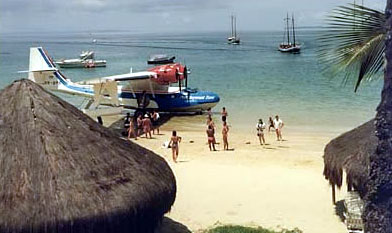
Bahia doTodos os Santos
Really, the Catalina is in her element. She was built for long-range flying and has a ruggedness not found in aircraft design these days. We also have the benefit of 16 modern passenger seats, a proper toilet and, of course, all the wonders of modern avionics – no less than 4 transceivers (2 VHF airband, one VHF marine band and fully synthesised HF for long-range comms); and we have 2 transponders (yes they both went wrong eventually!) as well as 3 GPS receivers, Loran, fuel/air data computer, VOR, ILS, DME, ADF ….. In fact getting lost in Killer Cat is inexcusable, though I would never say impossible! Most important are our uprated engines – Wright Cyclones of 1,700 hp replacing the original Pratt & Whitney 1,200 hp engines. These give a margin of safety that I personally consider important; for the aircraft can fly and climb happily on one engine, even at maximum weight and considerable altitude, whereas the standard Catalina will only climb on one under favourable circumstances, as shown by the recent loss of a standard Catalina in transit from the USA to New Zealand, when one engine gave trouble. We carry lifejackets and dinghies for all, as well as several sets of portable oxygen equipment for use on high altitude flights. From 10 years of operating experience we also have a good idea what spares to carry, trading off weight, importance and likelihood of needing the item to achieve the best compromise.
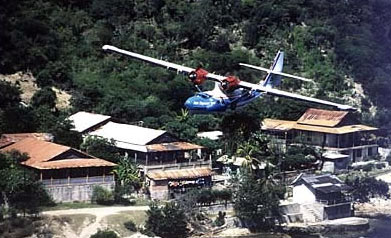
Santiago Bay
So the landing at Laguna San Pablo was one of the high spots of the tour; there were lots of others – in fact almost every flight was an exhilarating experience, to be repeated who knows when? We’ll look at a couple more in this article, but first – what about the low spots? Fortunately, there were very few of these. Just two really.
The second came at San Andres, a small Columbian Island in the Caribbean. Engineer Garry Short and co- pilot John Alsford had just completed a cylinder change in record time, and we had moved the Cat to the refuelling area. As we waited for the refuellers’ lunch break to finish, a Columbian Caravelle, parked next to us, started engines and almost immediately taxied forward. After 50 yards it turned slightly to point its engines at our port wing trailing edge, stopped, then applied what seemed like almost take-off power. Such a lack of common sense and airmanship was hard to believe. The inevitable result was our poor left aileron flapping in the breeze, despite the internal control locks being in place. By incredible luck, the only damage was a snapped aileron cable, but for a few terrible hours it looked as though the whole tour was about to be cancelled, thanks to something beyond our control. Fortunately, our spares packup allowed us to rectify the problem and we were airborne again the next day, with feelings of total despondency rapidly being replaced by the more customary exhilaration.
The first low point, and a rather more major one, was at Rio de Janeiro – ironically, the very city where John Watts and I had started our hunt for a Catalina all those years ago.
Here we operated from the commuter airport, Santos Dumont, rather than the major international airport. A lovely spot, with beautiful warm dry weather, in the shadow of the Sugarloaf Mountain and the Christ Redeemer statue, which were to become the background scenery for a week or so …..
The programme called for a water landing in the bay, just a mile or two from the airport. With a full load of excited young people, film crew and so on, we touched down as planned – if a little solidly – on the rather choppy water, filmed from a locally hired Bell helicopter. So far so good. Now reposition for the takeoff run – plenty of water over the cockpit as we do this; with 2 feet of chop and 12 knots wind we can’t help splashing around a bit, especially as we swing the aircraft one way then the other to turn downwind. Checks after landing, checks before takeoff – co-pilot Ray Coates normally flies Jumbos for British Airways, and he’s more used to civilised discussions in the cockpit – deciding whether to order the chateaubriand or the salmon for dinner – than to the highly physical job of getting a Catalina lined up on the sea, opening and shutting the sliding window in the right sequence to let in some fresh air for demisting, but also to stop the next wave from drenching you. You learn fast on this one!
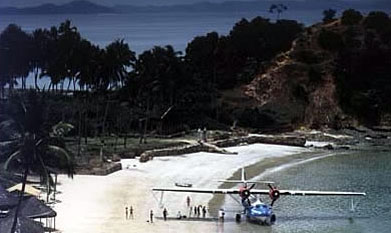
Salvador Brazil
Then, as we are about to apply power for takeoff, the calm voice of Hans Wiesman comes over the intercom. He knows about flying and would not interrupt now unless it was important. “There are drops of oil coming from the left engine, quite big.” But there are always drops of oil coming from the engines – we spend our whole life changing seals here, tweaking there to minimise the oil leaks – for the engines were designed in the 1930s and a certain amount of oil leakage is inevitable. Still, Hans would not say this unless he had seen something wrong. We must either stop the engines, in which case we shall be drifting with only our anchor to hold us and a threatening shoreline in the distance; or we must try to take off, before any possible problem becomes worse. Whichever, it most be done at once. Not the kind of decision I like. But the consequences of drifting out of control on this sea are potentially the more serious, so the power comes on, the engines are smooth, the temperatures and pressures still good, the Cat responds with a couple of surges of water over the cockpit and then a clear view as she rises up on to the step, smacking through the chop, final check and we have good power indications, safely airborne now above single engine control speed, situation rapidly improving ….. and then, of course, the inevitable falling oil pressure on the left engine (always accompanied by a mental check of the bank balance!). Oily blue/white smoke starts to increase from the left engine exhausts, classic sign of a cylinder problem. But we only have a mile to go to finals at Santos Dumont; a quick “Pan” call alerts Air Traffic of our problem, and we are on the ground almost before there is time to feather the engine. We keep enough speed on the runway to let us taxi off and reach a suitable stopping area – the Catalina cannot taxi far with only one engine running, due to the relative positions of the engines and brakes.
The next few hours are predictable – “What’s the problem?” – “How long will it take to fix it?” – “Why is all that oil on the plane?” – and other similarly helpful interjections, all accompanied by eager film crew and photographers anxious for that special shot of the crew reacting to a real live situation! We smile for them and get on with the job, hiding our sinking hearts. Thirty minutes later the oil filter produces its telling evidence – a mass of metal particles, very pretty if you like shiny things, but not what we like to see. Whether it is a single cylinder with a broken piston ring (which we believe it was) or something more serious, the fact that we still have 100 hours’ tour flying ahead of us means that an engine change is required.
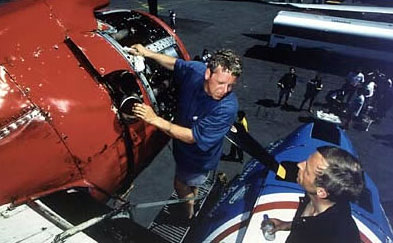
Chief engineer Gary Short (left) with Paul Warren Wilson
The following days were reminiscent of the problem solving tests I had seen 20 years earlier, during my Biggin Hill selection for the RAF, but on a rather grander scale. The problem: your aircraft is in South America with a broken engine, your spare engine is in the USA, your crew consists of yourself, your engineer and your co-pilot (now Martin Sharman, another British Airways Jumbo pilot taking leave to fly the Catalina!), you have only the tools you brought with you, and the availability of any hangarage, work platforms, lifting gear etc depends upon your ability to negotiate with the Portuguese-speaking staff of the local airline, VASP! The requirement: get the aircraft back in the air at the earliest possible opportunity, or the whole tour will be cancelled; moreover, provide your estimate for completion now, and it’s no good being either optimistic or pessimistic, you have to be right. There are hotel bookings for 20 people to consider, and a rotation by airline of the next set of participants from Europe at Lima, the other side of the continent, in 10 days’ time. I enjoy a challenge, but prefer the stakes a little lower!
Suffice to say, over the next few hours the plan came together, with appropriate priorities:
– Get the spare engine, on standby in the USA, shipped by air to Rio – fortunately, a major hub in the airline route network.
– Liaise with the local airline to borrow hangar space, platforms etc. The chief engineer spoke some English and was very kind; the helpful spirit still lives in aviation, for everyone knows that they could be the one with the problem next time.
– Plan the engineering sequence with my engineer and co-pilot, to get the propeller and U/S engine and accessories removed whilst the spare engine is in transit.
– Hire a 10-ton crane and get it to the aircraft at the appropriate times.
– Use ‘local’ methods to speed the spare engine through Brazilian customs within a few hours of its arrival.
– Liaise with Hans Wiesman, who continued the next leg by airline, to update him with progress and confirm forecasts for tour resumption.
– Stand myself back from the heavy engineering work, to avoid fatigue and allow resumption of the flight immediately the engine change was completed.
The engine change was successfully completed in 7 days, a time which we could not better even at home base. The Catalina was serviceable again on my birthday – October 6th – a nice present! She rejoined the tour proper at La Paz, and the success of the whole project was recovered. A potentially disastrous situation was saved, and Killer Cat was back in her element again!
We had flown from Rio to La Paz in the minimum time – 2 days – with an intermediate stop at Ponta Por‹, on the border between Brazil and Paraguay. What a transition as we approached La Paz! The whole operation had been at low level so far. Now, as we confront the Bolivian Altiplano, there is some serious climbing to be done. A standard Catalina simply would not have the puff to fly this route, but our bigger engines give us a ceiling of 20,000 feet, more than adequate to cross the Andes and even retain a fair single-engine option. Approaching 10,000 feet the fuel booster pumps come on, as the engine-driven pumps need some help at this height. Then it’s time to don our portable oxygen equipment and check our flow settings. At 12,500 feet it seems incredible that we still have another 1,000 feet to climb to reach landing altitude for La Paz – but then it is the highest airport in the world. Hardly surprising that the runway is as long as the airfield is high! The Cat takes it all in her stride; she has seen it all, done it all many times before in her long career. She is happy to climb and climb, but experience has shown that she is happier making a long slow climb than being forced up at the last minute, so we let her cruise on up at 100-200 feet per minute, always keeping an eye on the engine gauges for any abnormalities. The manifold pressure at full throttle is unusually low – around 25″, a consequence of the height – but all is well. Around 15,000 feet we are high enough for the approach into La Paz, where the scenery is stark in its beauty – sand brown land, sand brown city, duck-egg blue sky pasted with cotton wool tufts, brilliant white snow caps on the mountains, a black tarmac Runway 27 ruled out on the ground. It looks so like the simulator it’s hard to believe it’s real. A few handling problems show up now – we might only have our usual 80 knots Indicated Airspeed round finals, but we have a much higher True Airspeed and the momentum makes it harder than ever to lose height on finals without throttling right back. And after touchdown, the black smoke from the engines causes some worry, until we lean back almost to idle cut-off – the auto-lean position can’t get the mixture lean enough at idle for this kind of altitude!
There is great excitement at La Paz, for the Cat’s return has been eagerly awaited. The cameras are running, and in quick time we fly out to Lake Titicaca, highest lake in the world, for a fleeting visit. The following morning sees us filming at the airfield, an incredible piece of the past, with friends from the Cat’s own era parked at every corner. DC3s, DC6s, C46s, they are all here, hauling meat to the city from the farms below. It’s the only practical way to supply the city. They look like dinosaurs, some half gone as they are cannibalised to keep their sisters alive. A graveyard at first sight, but more like a hospital as you look closer. And these aircraft really are alive and working hard, though the stench inside is unbelievable. We look on in awe as buckets of fuel and oil are lifted by hand to replenish for the next flight – say 1,000 gallons, say 2 gallon bucket, that means 500 bucketfuls! A piglet trots around the undercarriage, its home just a short stroll away in the back yard of the shack by the plane – where the crew live. They stare at us, as uncomprehending of us as we are of them, but through the barriers of culture, language, and lack of oxygen I see an understanding that we both fly.
Permission to land at Cuzco is denied to us; the approach is considered too difficult for a visit by a crew not experienced with local conditions. Sadly, therefore, a flight over Machupicchu will not be possible. But on the way to Lima we will spend some time hunting for the lines in the sand that some say were drawn by visitors from space in the distant past. Then Anta, a mere 9,000 feet up in the Andes, close to the sight of a devastating landslide that happened many years ago, the day after a French atomic test in the Pacific ….. in fact the runway was built to get relief supplies in. Clear customs at Tumbes and we are at Quito, battling through an instrument approach at 17,000 feet, with our visit to Laguna San Pablo the next day.
From then on, we shall have finished with the high altitude operations – a relief for us all, as there was an inevitable strain both whilst gasping on the ground and whilst flying in rather unfamiliar circumstances.
Two more weeks will see us back in Duxford, though on the way we shall follow the Panama Canal for 50 miles, moor up at Santa Catalina near the Island of Providencia where Captain Morgan’s treasure is supposed to be buried (I decline the conch for lunch), experience the most wonderful hospitality in Cuba, always wondering how much of the real thing we are being allowed to penetrate, glance off the Bahamas at Bimini, where there is only one reason for visiting other than drug smuggling (and that is drug smuggling!), explain ourselves to the USA immigration services (who were quite unjustifiably friendly to such a motley crew!), and make a sad farewell to all our friends with a final visit to the Watson Island base where Chalks Flying Boat Service operates.

Providencia the Jewel of the Carribbean
The ferry flight home from Miami to Duxford seems routine by comparison. We are joined by Catalina Society members Alfred Rijkers and Heijo Kuil, who are sufficiently trusting as to have bought one-way air tickets to meet us at Miami! An extra pair of hands is always welcome, to help with the physical tasks of refuelling, re- oiling, cleaning etc that never stop. We have planned the Atlantic crossing via St John’s and the Azores to Duxford, but as we study the met reports we see a real opportunity of routing direct from St John’s to Shannon.
On the day, tailwinds up to 60 knots are forecast, so we save ourselves a day’s flying with the direct crossing. It’s still the Atlantic though, giant and grey, with winter fast approaching now as we are into November; my mind wanders, again imagining those many, many wartime sorties, always tinged with an element of cold fear that we are spared. Still, though we may make the most careful preparations, and consider the contingencies at length, even nowadays we are not totally without fear, for aviation is terribly unforgiving and is patiently waiting to catch the unwary or the careless or even the unlucky; we are reminded again, a few hours out from St John’s, with a sudden drop in the oil pressure on one engine from 80 to 60 psi. There is nothing whatsoever to be done, except to watch it anxiously for the rest of the flight.
Hopefully, it is just a tiny piece of debris making the oil pressure control valve stick. (It was.) We claw our way up to 10,000 feet to keep out of the cloud, listening all the while to the air-conditioned jetliners fighting for their cruising levels in the clear, smooth air miles above us. Then we bump our way back down through the cloud to low level, as the cloud tops rise ever higher and icing threatens; fair weather again, and the better tailwinds are at height, so up we go again, slowly to nearly 12,000 feet. The cold starts to bite now; every thousand feet is another 20C colder. Our feet rest on towels for insulation from the icy metal floor and we wrap up in blankets.
The cockpit descends into hilarity as co-pilot John Alsford tries to keep warm by putting his Peter Stuyvesant designer sweatshirt on – his legs! One banana, two Mars Bars, three packets of crisps and four cups of coffee later darkness falls; the lights of a trawler tell us we are upside down, the instruments try to reassure us that we are not, and then we receive a true Irish welcome with a bucketful of rain. At the end of 11 hours’ flight (without autopilot) there is a nice little night ILS approach into Shannon, with pouring rain and a stonking crosswind, to look forward to. Perhaps 2 months have given us a certain sharpness with the aircraft, though never complacency, for the landing is a greaser. This feels like home now and, with a short hop to Duxford the next day – and a greeting that I shall never forget from the family who have waited so patiently for so long – we really are home.
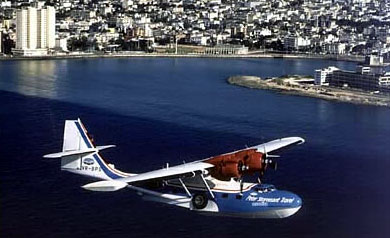
Havana Club
Previous Comments:
| Capt. G. W. Olsen – 23 March, 2007 Wonderful story beautifully written. GW |
| Captain Nelson Monteiro – Apr. 03rd, 2007 – 3 April, 2007 No words when I see a Catalina Photo. Drops roll on my face. I love them, really. |
| Riemke – 12 June, 2009 Great to read this, as I was one of the contestants of this wonderful trip. I have joined the part from Fernando de Noronha to Rio and experience the engine problems in Rio. |
